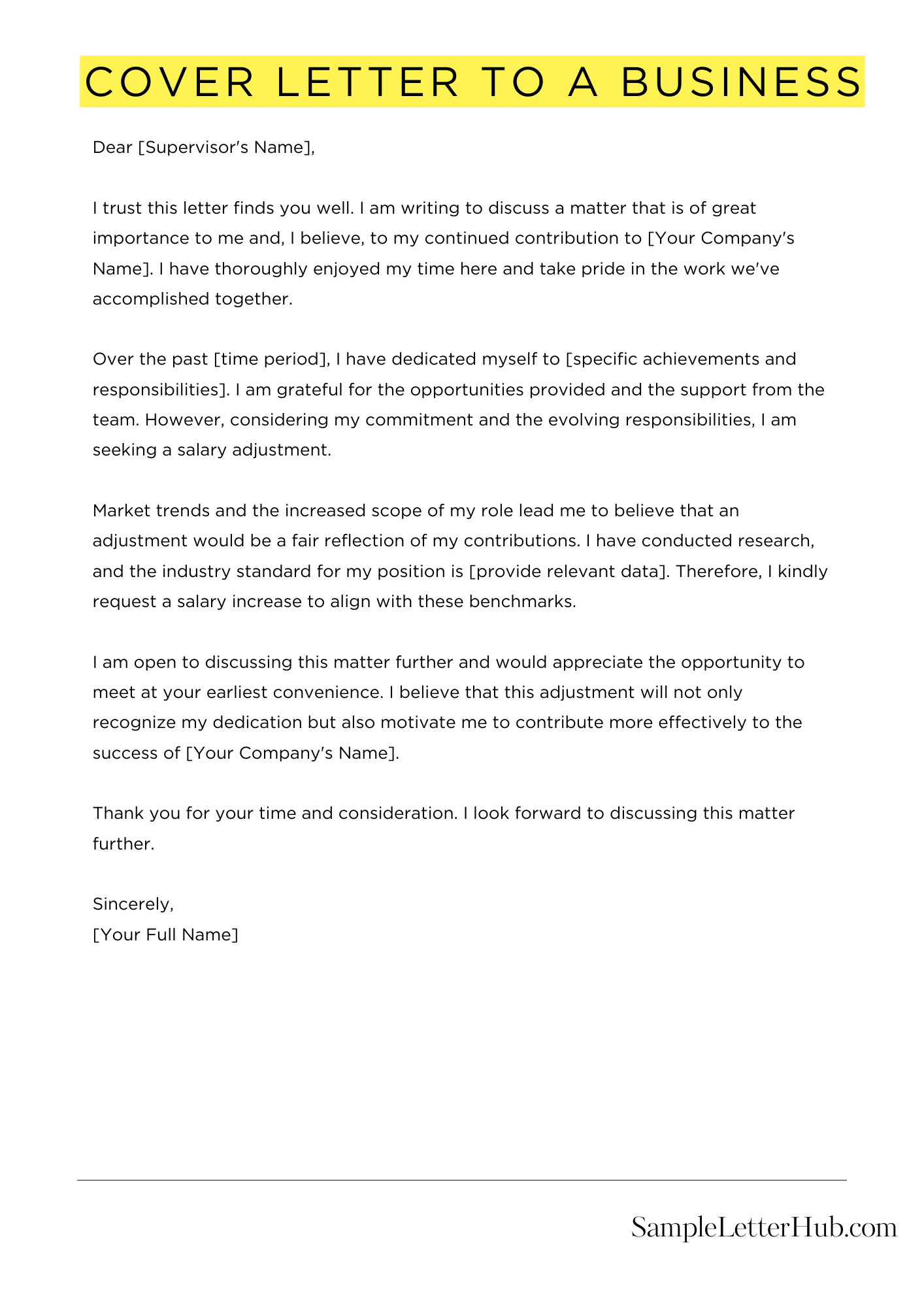A cover letter is a document that you send with your resume when you are applying for a job. It is an opportunity to introduce yourself, highlight your skills and experience, and explain why you are interested in the position.
In this article, we will share some templates, examples, and samples of cover letters to a business. These resources will help you write a strong cover letter that will make a great impression on potential employers.
We have included a variety of cover letter samples to choose from, so you can find one that best fits your needs. We also provide tips on how to write a cover letter that will stand out from the crowd.
Cover Letter to a Business
Dear Hiring Manager,
I am writing to express my keen interest in the open position at your esteemed organization. With my proven track record in [relevant industry or field], I am confident that I possess the skills and experience necessary to excel in this role.
Throughout my career, I have consistently exceeded expectations in [list of accomplishments]. I am particularly adept at [specific skills or abilities]. My ability to [describe a specific skill or ability] has enabled me to [describe the impact or result].
Furthermore, I am a highly motivated and results-oriented individual with a strong work ethic. I am proficient in [list of software or tools] and have a deep understanding of [relevant concepts or principles]. I am also an effective communicator and have a proven ability to build strong relationships with clients and colleagues.
I am eager to contribute my expertise and passion to your organization. I am confident that I can make a significant contribution to your team and help you achieve your business objectives.
Thank you for considering my application. I look forward to the opportunity to discuss my qualifications further and demonstrate how I can add value to your organization.
Sincerely,
[Your Name]

**How to Write a Professional Email to a Business**
**1. Start with a Clear Subject Line**
Make sure your subject line is concise and accurately reflects the purpose of your email. Avoid using vague or generic language.
**2. Address the Recipient by Name**
If you know the name of the person you’re emailing, use it in the salutation. If you don’t, use a generic greeting like “Dear Hiring Manager” or “Dear Customer Service Team.”
**3. Introduce Yourself and Your Purpose**
In the first paragraph, briefly introduce yourself and state the reason for your email. Be clear and concise.
**4. Be Specific and Provide Details**
In the body of your email, provide specific details about your inquiry or request. Use clear and concise language, and avoid using jargon or technical terms that the recipient may not understand.
**5. Be Professional and Polite**
Maintain a professional and polite tone throughout your email. Avoid using slang, abbreviations, or overly casual language.
**6. Proofread Carefully**
Before sending your email, proofread it carefully for any errors in grammar, spelling, or punctuation. A well-written email reflects positively on you and your business.
**7. Follow Up Appropriately**
If you don’t receive a response within a reasonable time frame, consider following up with a brief reminder email. Be patient and respectful, and avoid sending multiple follow-up emails in a short period of time.
FAQs about
1. What are the benefits of
There are many benefits to , including increased brand awareness, lead generation, and customer acquisition. can also help you build relationships with customers and partners, and drive traffic to your website.
2. How can I measure the success of my
There are a number of ways to measure the success of your , including website traffic, lead generation, and sales. You can also track engagement metrics, such as likes, shares, and comments, to gauge the level of interest in your content.
3. What are the best practices for
There are a number of best practices for , including:
- Create high-quality content that is relevant to your target audience.
- Use a variety of content types, such as blog posts, videos, and infographics.
- Promote your content on social media and other online platforms.
- Track your results and make ajustes as needed.
4. What are the common mistakes to avoid in
There are a number of common mistakes to avoid in , including:
- Not creating high-quality content.
- Not promoting your content effectively.
- Not tracking your results.
- Not being consistent with your posting schedule.
5. How can I get started with
There are a number of ways to get started with , including:
- Create a content calendar.
- Start writing blog posts or creating other types of content.
- Promote your content on social media.
- Track your results and make ajustes as needed.

